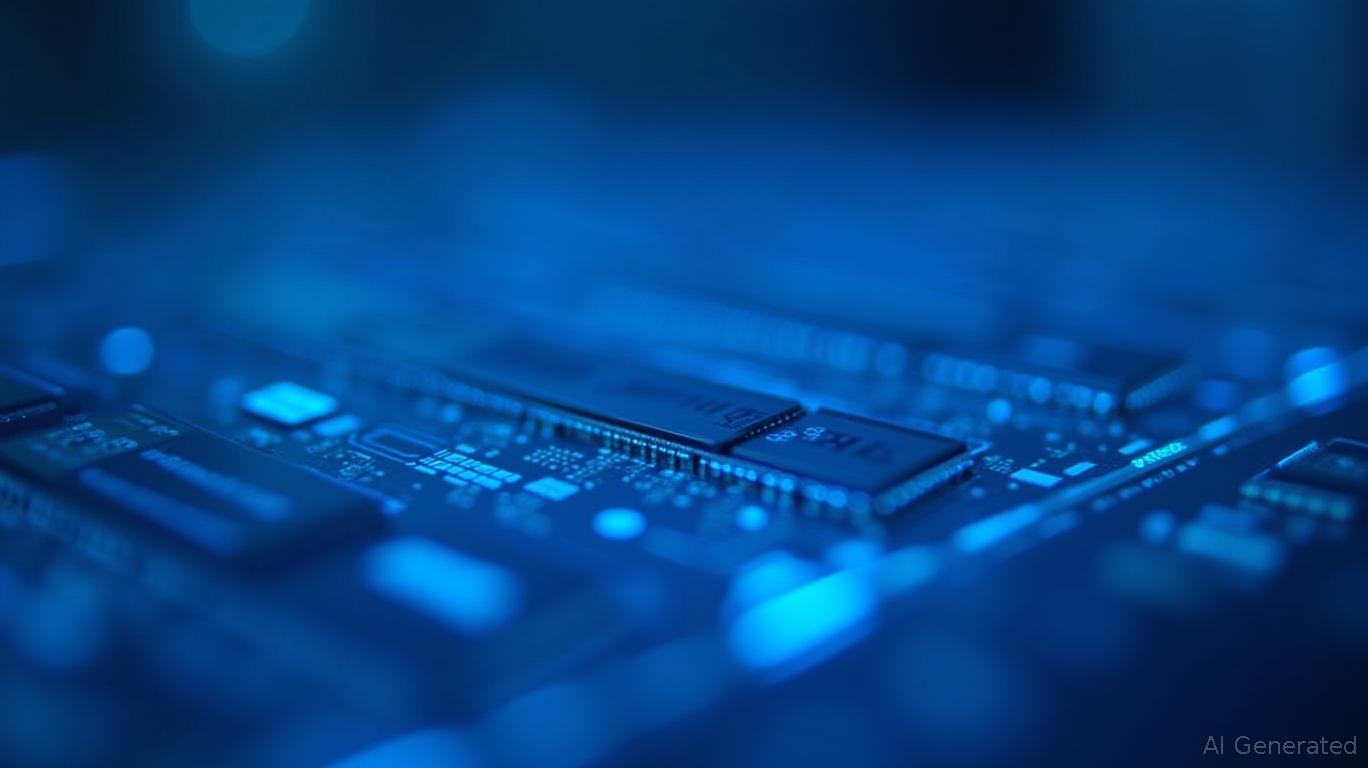AInvest Newsletter
Daily stocks & crypto headlines, free to your inbox
The semiconductor industry is undergoing a seismic shift, driven not just by Moore's Law but by the insatiable appetite of artificial intelligence (AI) for high-performance computing. At the heart of this transformation lies Micron Technology (MU), a company once synonymous with commodity memory chips now positioning itself at the forefront of the AI revolution. Its first-quarter fiscal 2025 results, which shattered records with $8.71 billion in revenue, underscore a structural shift in demand for its high-bandwidth memory (HBM) solutions—a technology critical to training and deploying advanced AI models.
Micron's surge in data center revenue—up over 400% year-over-year and now representing over half its total sales—reflects the growing dominance of data-centric workloads. AI systems, whether for natural language processing or autonomous vehicles, require memory chips that can handle vast amounts of data at blistering speeds.
, which stacks memory chips vertically to boost bandwidth, is the gold standard for this purpose. Micron's HBM3E modules, delivering 1.2 terabytes per second of bandwidth, are now central to partnerships with cloud giants like and , which are scaling up their AI infrastructure.
Micron's Q1 results are a masterclass in strategic execution. While consumer markets remain sluggish, its focus on high-margin HBM and data center markets has insulated it from broader industry volatility. The company's HBM revenue grew sharply, with shipments expected to capture nearly 20% of the global HBM market by year-end—a figure that could rise as AI adoption accelerates.
The stock's 40% rally since late 2024 reflects investor confidence in this transition. Even as
guides for a modest dip in Q2 revenue to $7.90 billion—a pause attributed to seasonal factors—the long-term trajectory remains clear. By 2030, HBM is projected to command over 50% of the DRAM market, per Micron's estimates, creating a multi-decade growth runway.No investment is without risks. Micron faces fierce competition from Korean peers like Samsung and SK Hynix, which are also ramping up HBM production. Chinese rivals, meanwhile, benefit from state-backed subsidies, though geopolitical tensions may limit their global reach. Additionally, consumer memory prices remain under pressure, and Micron's gross margins could come under strain as rivals catch up on HBM technology.
Yet Micron's $200 million investment in an Arizona HBM3E fabrication facility signals its resolve to stay ahead. The company's partnerships with cloud providers and its lead in advanced packaging technologies—such as hybrid memory cube (HMC) designs—further cement its edge.
For investors, Micron presents a compelling structural growth story in a sector where AI's chip demands are only beginning to be fully realized. With HBM revenue poised to nearly double this year and data center sales driving half its business, the company is no longer a cyclical memory supplier but a technology leader in a $200 billion semiconductor market.
Key catalysts to watch:
1. Adoption rates of HBM3E by hyperscale cloud providers.
2. Micron's market share gains versus competitors in advanced-node memory.
3. Geopolitical developments, including U.S.-China trade policies impacting semiconductor supply chains.
While near-term volatility is inevitable, Micron's strategic bets on AI infrastructure position it to capture a disproportionate share of a rapidly growing market. For long-term investors willing to look beyond quarterly noise, Micron offers a rare opportunity to bet on a company that is redefining the future of computing.
In a data-centric world, the race for AI supremacy hinges on memory—and Micron is writing the playbook.
Tracking the pulse of global finance, one headline at a time.

Dec.19 2025

Dec.19 2025

Dec.19 2025

Dec.19 2025

Dec.19 2025
Daily stocks & crypto headlines, free to your inbox
How will Nike's stock performance impact the overall market trend?
How can investors navigate the potential risks and opportunities presented by Nike's stock slide?
What are the potential implications of the U.S. stock market's early gains on investor sentiment?
How might the current technical strength and aggressive call bets on these five stocks influence future price movements?
Comments
No comments yet